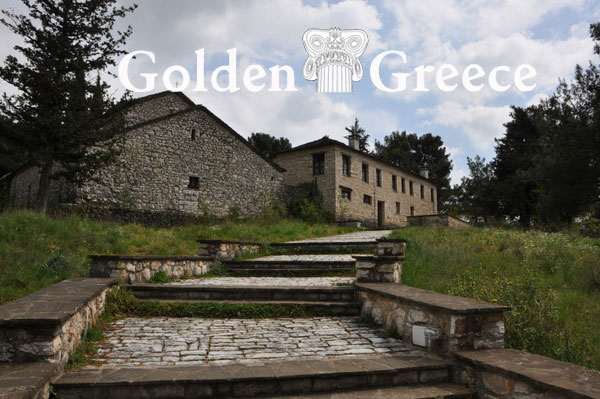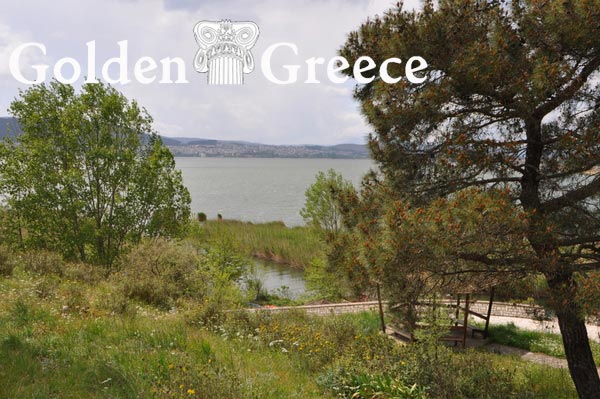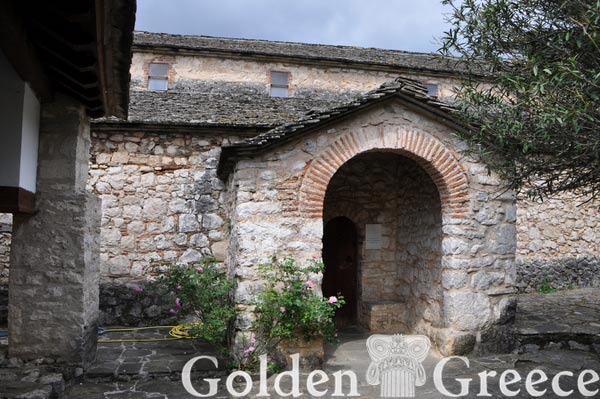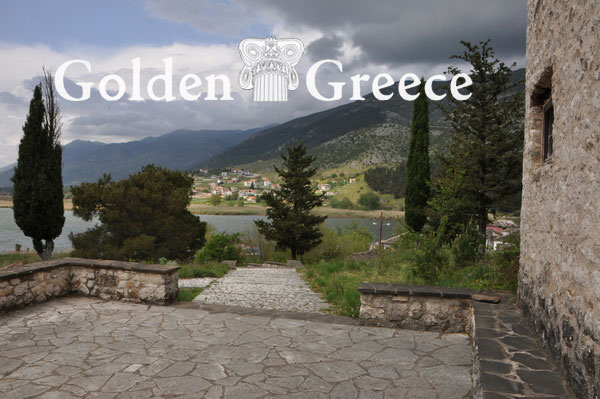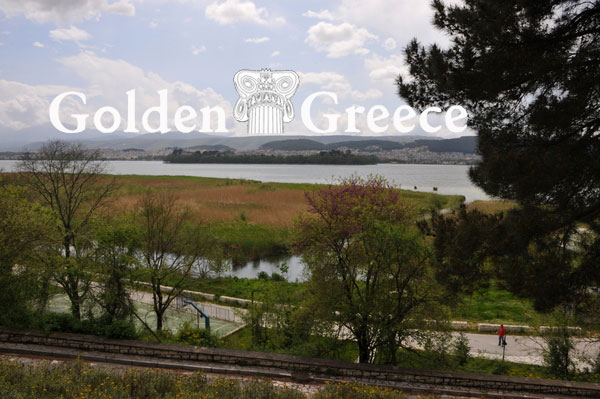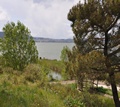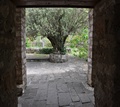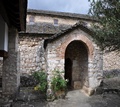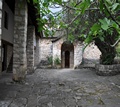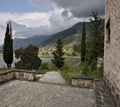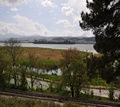
The Monastery of Agios Nikolaos Philanthropines (or Spanos) was founded in late Byzantine times. In 1291/2, the monastery's catholicon was renovated by Michael Philanthropinos, as mentioned in an inscription that is preserved inside the lintel of the main church. It reached its peak in the 16th century. The catholicon was renovated, extended and frescoed, in three phases (1531/2, 1542, 1560).
From the monastery complex today the katholikon is preserved, part of the cells and the Bank at the SE edge of the katholikon. The church of the katholikon is distinguished by a simple architectural line, it is single-bay, with a vaulted roof, while it also has a vaulted narthex (simple) and three accessories (exonartheks) that surround it in a P shape. The exterior of the katholikon of the monastery has no ceramic decoration. An architectural peculiarity is the semi-circle of the niche which is shaped internally while externally it is inscribed in a rectangle, giving a different plastic image to the eastern side of the temple.
Its interior is lined with frescoes of exceptional art. Three phases of wall painting of the church can be distinguished: during the first two the main church was painted (1531/2, 1542), while in the third phase the narthex and the three external narthexes were painted. The pictorial program of the main church includes the Christological cycle, - the Passions, the Gospels and the Miracles - scenes from the Theotokos and the liturgical cycle as well as full-length saints.
The pictorial program of the main church includes the Christological cycle, - the Passions, the Gospels and the Miracles - scenes from the Theotokos and the liturgical cycle as well as full-length saints. The figure of Pantocrator that adorns the dome is imposing, while the painted composition above the Holy Altar of the Divine Liturgy is also noteworthy. The wall paintings (16th century) of ancient Greeks that are depicted in the outer narthex of the Monastery of Philanthropines on the island of Ioannina make an impression. These are Solon, Plato, Thucydides, Aristotle, and Plutarch, who were considered prophets of door-to-door education, a depiction that symbolizes the more universal dimension it took during the 16th century. the Christian teaching and the attempt to connect Christianity and Ancient Thought.
The monastery of Philanthropines is perhaps the most important monastic complex of those that exist on the island of Ioannina. Today the monastery is one of the attractions of the Island of Ioannina, while the church is open several times a year. The Island, in Lake Pamvotida, was an important monastic center during the Byzantine era and seven other monasteries from different eras are preserved on the island. The Turks called it Kiafir Andasi, which means island of infidels, because it had been granted special privileges and was never inhabited by Muslims.
Editor: Fotini Anastasopoulou

